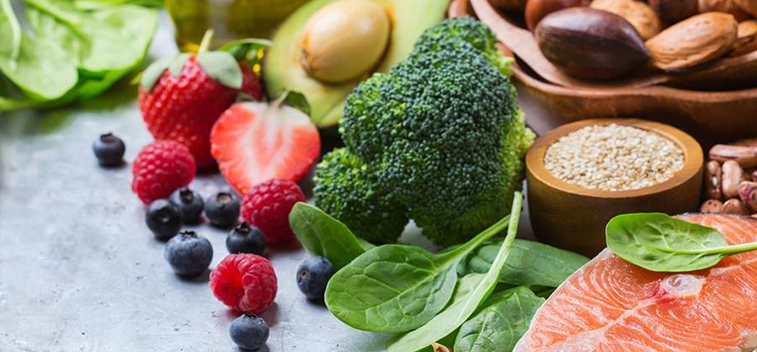
In an increasingly chaotic and industrialized world, with a frantic pace of life, it is important to maintain a diet that allows us to survive in that unbridled routine. The manipulation of food is a reality with which we have to live.
The so-called 'processed' foods are increasingly a greater variety of day-to-day products and according to the WHO, are nutritionally unbalanced. Luckily, there are alternatives with which to reduce the impact caused by these foods in the long term. It is important therefore, to include in our diet healthy products that counteract these effects and although there is no perfect food that concentrates the components required in the perfect dose, one of the advantages of the food are the infinite possibilities of combination of ingredients. So we propose the following foods to finalize our list of “top” health foods.
-
Carrot: In the raw state, strengthens teeth and gums. It fights constipation and poisoning, helps the decomposition of kidney stones, is good for eyesight, strengthens nails and hair and is even able to improve the quality of breast milk. In 2014, the WHO carried out a study, the World Cancer Report, in which it reported that the carrot forms part of an exquisite group of foods with very positive effects in the fight against cancer.
-
Beans: They are part of the most iron-rich legumes, such as lentils or chickpeas. They are rich in vegetable proteins, carbohydrates, fiber and also, it is low in fat. Its high content of folic acid make it a great ally for pregnant women and lactating women. They are perfect for people suffering from anemia, cholesterol, and hypertension.
-
Olive oil: And the 'liquid gold' of extra virgin quality helps skin care, intervenes in the proper functioning of the liver, prevents aging and also has anticancer properties.
-
Spinach: Spinach is a food that allows its consumption in many different ways, from raw, accompanying salads to boiled. This vegetable has a lot of minerals and vitamins. Among its benefits, the most important are its ability to protect the stomach mucosa, against neuronal deterioration and eye diseases, bone fortification and even regulate blood pressure.
-
Cauliflower: Because of the strong smell that comes from cooking it, cauliflower is a vegetable that is somewhat 'marginalized' from the usual diets. However, the ANDI index (Aggregate Nutrient Density Index) has shown that it acts against cancer, improves memory, fortifies bones and even helps in the digestive process. We tell you more in this article.
-
Natural yogurt: It is a great source of calcium, phosphorus and magnesium. The natural yogurt, that is to say, the one that does not contain an extra dose of sugars, possesses vitamins of group B, which turns this food into a perfect complement to act against the intestinal infections, helping in addition, to stabilize the flora, besides fighting vaginal infections.
-
Mushrooms: It is another food that, in addition to its multiple properties, is an effective product to fight some types of cancer. The mushrooms provide our body with an amount of vitamin D and other minerals. They play a very important role in the absorption of calcium from the bones, as well as in cell regeneration.
-
Nuts: It is one of the best sources of vitamin B3, along with other nuts such as almonds. It acts as a strong antioxidant, helping to develop our intellectual capacity and psychomotor reflexes, so it prevents neurodegenerative aging like Alzheimer's.
-
Banana: They are a good source of magnesium. Magnesium is essential for the production of energy and an adequate nervous function. It also stimulates muscle relaxation and helps the body produce and use insulin. Magnesium is also the key to calcium absorption and a correct balance between the two minerals is important for weight loss.
-
Garlic: Garlic is high in antioxidants such as lysine and quercetin, which helps prevent colds. Despite its powerful smell and taste, you can consume raw, cooking it as a condiment in our meals or rooms and even in salads and pasta.
SOURCE: Very Interesting Magazine.